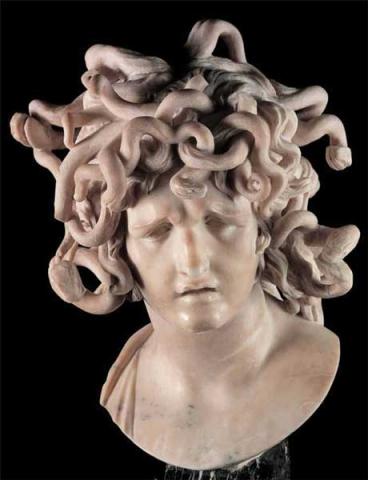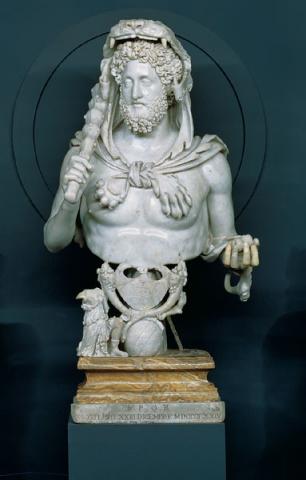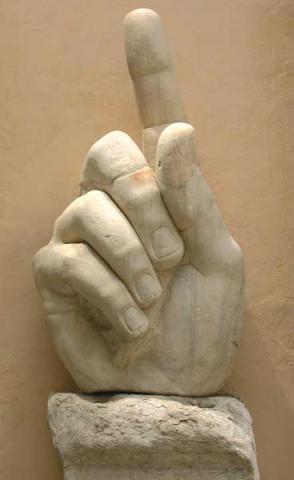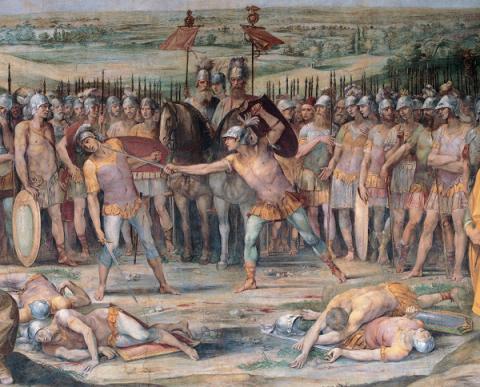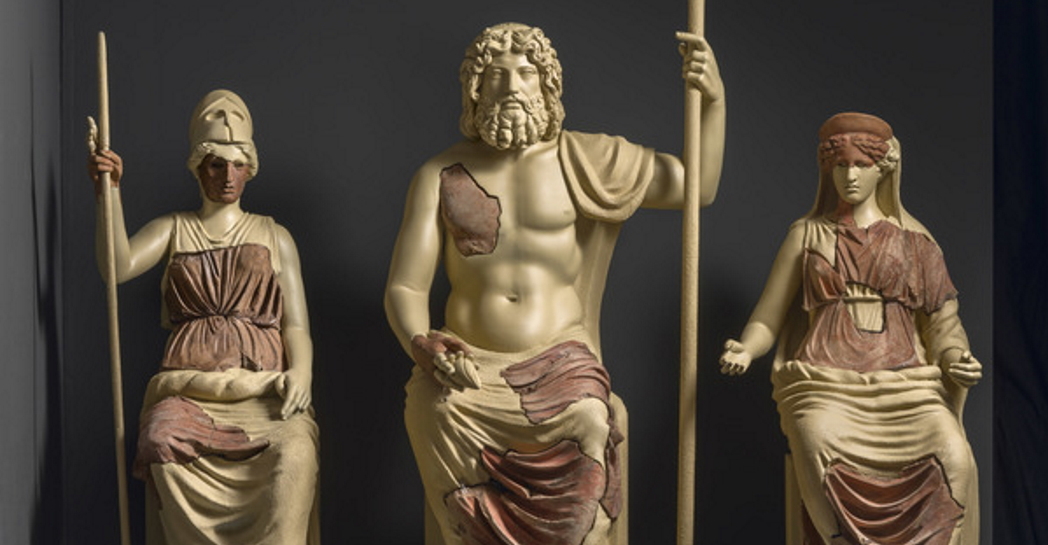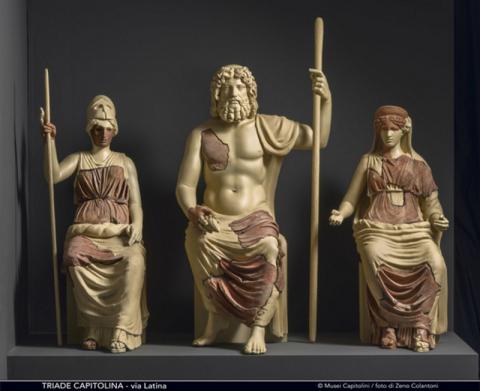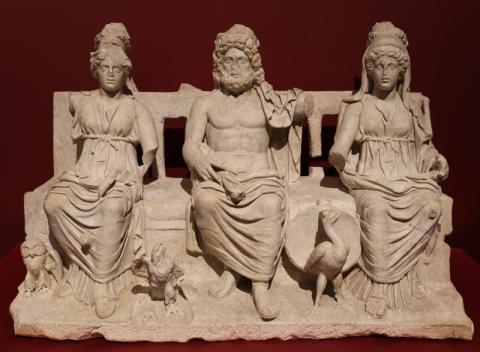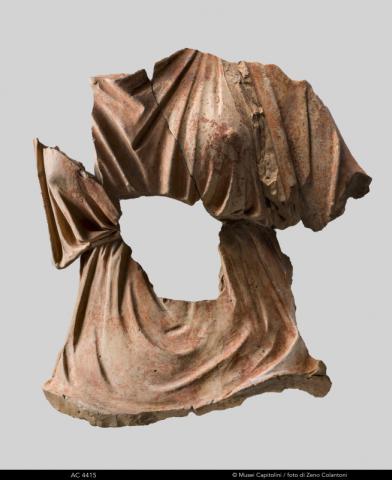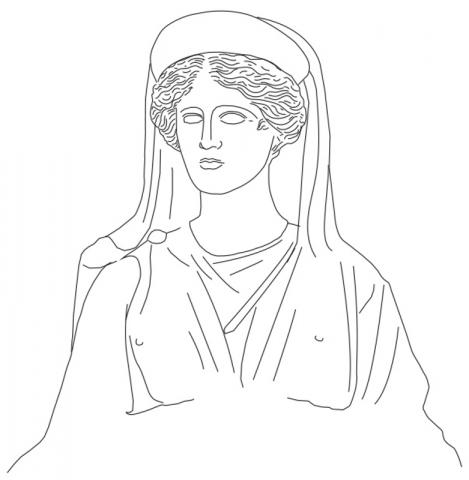The triad from the Via Latina: digital brings the past to life
When they are not fully preserved, ancient sculptures can be 'restored' by exploiting the potential of 3D modelling. Starting with scans of surviving original fragments, a single sculpture or entire groups can be recreated in a virtual environment.
Thanks to the use of state-of-the-art digital technology, we can now admire, for the first time, some of the fronton sculptures belonging to a temple that stood along the Via Latina in Rome in the early 1st century BC.
The reconstructive proposal (fig. 1) is the result of an intervention developed in several phases, which included the 'search for the attachments', the iconographic study, the restoration of the fragments and, finally, the first graphic and digital, then physical recomposition of the sculptures. Each phase involved a large team of specialists working in parallel, sharing resources and experience.
The iconographic study made it possible to identify in the surviving fragments Jupiter, Juno and Minerva, who should be imagined at the centre of a pediment populated by at least eight other figures. Thirteen pieces have been attributed to Jupiter, including the hand holding the thunderbolt (fig. 2), 15 to Juno and 11 to Minerva.
The scheme and details of the figures were reconstructed using ancient statues in similar poses as a model and in particular the sculptural group of the Capitoline Triad in the Archaeological Museum of Guidonia Montecelio dating from the end of the 2nd century A.D. (fig. 3), with which the sculptures of the Via Latina show close points of contact. Thus, a two-dimensional drawing was developed in 'traditional' form and, on this basis, the 3D modelling was set up. The images in the gallery show how, in the case of the figure of Juno, a detailed graphic reconstruction (fig. 6) was developed from the fragments of the head with diadem and the draped bust (figs. 4-5).
As the fragments of the sculptures largely do not fit together, the installation project involved inserting the original parts into self-supporting resin housings made by means of 3D printing. The housings were created in negative on the surface of the sculptures thanks to three-dimensional models of the fragments obtained by laser-scanning with structured light.
The intervention has numerous advantages from both a conservation and educational point of view. The interlocking of the negatively modelled fragments on the supports minimised the need for pins and plastering, not compromising the legibility of the works and making the intervention completely non-invasive. Visitors can thus realise the overall volume of the figures, distinguish the antique from the reconstructed thanks to the difference in colour and appreciate the individual fragments 'in context'. Finally, the set-up is fully reversible and makes it easy to add further elements in the future.
> Back to the exhibition


























